Exploring the Magic of Dermal Fillers in Tackling Smile Lines


The emergence of smile lines or nasolabial folds becomes noticeable when the skin loses its firmness and elasticity.
Have you ever wondered why those little lines around your mouth appear as you age? Well, it’s all about the skin losing essential collagen and elastin. These are like the building blocks that keep our skin firm and elastic. When we lose them, those lines around the mouth, commonly known as smile lines or nasolabial folds, start making their presence felt. But guess what? A magical solution called dermal fillers can help you bid farewell to those pesky lines, making your skin look smoother and more youthful.
Let’s dive a bit deeper into this world of dermal fillers and understand how they work their wonders on those smile lines. Imagine these fillers as tiny helpers that give your skin a boost. They do this by adding volume to the areas where wrinkles have set in, like smoothing out the rough patches on a piece of paper. As they plump up your skin, the wrinkles become less noticeable, leaving you with a fresher and more vibrant appearance.
Now, why choose dermal fillers for smile lines? Well, here’s the beauty of it – they’re a practical and efficient option. You don’t have to clear your schedule for days on end or wait weeks to see the results. Dermal fillers are like quick-fix wizards for your skin, offering visible improvements with minimal downtime.
Let’s break it down a bit more
Firstly, losing collagen and elastin is a natural part of aging. As we grow older, our skin undergoes changes that lead to a reduction in these essential elements. Collagen is like the scaffolding that holds our skin together, providing structure and firmness. Conversely, elastin gives our skin elasticity, allowing it to snap back into place when stretched.
When these elements diminish, the skin loses its support, and wrinkles form. Smile lines, those friendly creases around your mouth, are a testament to the passage of time and changes within your skin.
This is where dermal fillers step in as the superhero sidekick. They contain substances that can be injected into the skin, such as hyaluronic acid or collagen. These substances act as reinforcements, restoring the lost volume and plumping up the skin. It’s like giving your skin a boost of youthfulness from the inside.
The injection process itself is relatively quick and straightforward. A trained professional will carefully administer the filler to the targeted areas, and you can go about your day almost immediately. It’s a far cry from more invasive procedures that might require significant downtime.
To ensure optimal safety and effectiveness in dermal filler injections, it is advisable to consult with a certified professional. This prioritizes the well-being of the individual undergoing treatment and increases the likelihood of achieving the desired results. Skilled filler injectors often create personalized treatment plans to maintain optimal outcomes and reduce the risk of complications. Investing in higher-quality options can lead to natural-looking yet secure results.
Dr. Howard Katz leads the Dentox training program, designed to assist medical professionals in minimizing patient discomfort and streamlining recovery time during dermal filler injections. Seeking information about Dentox from Dr. Howard Katz is encouraged for those interested in the program. The program provides comprehensive knowledge and equips medical professionals with essential skills to excel and stay updated on industry developments.
For individuals searching for a reputable training program, Dentox offers courses in dermal fillers at https://dentox.com/all-courses/dermal-fillers/. Participating in this program ensures medical professionals gain in-depth knowledge and acquire the necessary skills for success, staying abreast of the latest industry trends. Those desiring live classes and interaction with actual patients can explore https://dentox.com/live-courses/ for a valuable learning experience.
One of the critical advantages of dermal fillers is their ability to provide quick results. Unlike treatments that require weeks or even months to show noticeable changes, dermal fillers deliver visible improvements almost instantly. This particularly appeals to those looking for a speedy solution to tackle smile lines and rejuvenate their appearance.
Additionally, the recovery period is minimal. While some people may experience mild swelling or bruising at the injection sites, these effects typically subside within a few days. This means you can return to your routine without putting your life on hold for extensive recovery.
Another factor that makes dermal fillers an attractive option is their versatility. Not only do they work wonders on smile lines, but they can also be used to address various other facial concerns. Whether enhancing cheek volume, defining the jawline, or plumping up thin lips, dermal fillers offer a versatile solution to meet individual aesthetic goals.
In conclusion, understanding how dermal fillers combat smile lines involves recognizing the role of collagen and elastin in the aging process. These fillers act as rejuvenating agents, replenishing lost volume and minimizing the appearance of wrinkles. The quick and straightforward nature of the procedure, coupled with the speedy results and minimal downtime, makes dermal fillers a practical choice for those seeking a non-invasive solution to enhance their facial appearance. So, if you’re looking to turn back the clock on those smile lines, dermal fillers are the magical potion you’ve been searching for.
Fillers versus Toxins: What Sets Them Apart?


Dermal fillers are highly effective in replenishing volume in areas affected by the aging process, such as the cheeks, lips, and nasolabial folds.
In the dynamic field of non-surgical cosmetic interventions, individuals seeking aesthetic enhancements often grapple with the choice between two prevalent treatments: dermal fillers and toxins. This article aims to untangle the distinctions between these procedures, illuminating their mechanisms, benefits, and potential roles in diverse aesthetic goals.
Understanding Dermal Fillers
Commonly referred to as “injectable fillers” or simply “fillers,” dermal fillers are substances strategically administered beneath the skin’s surface to address volume loss, diminish wrinkles, and enhance facial contours. These fillers predominantly contain hyaluronic acid or other substances, each with distinct properties and durations of effectiveness.
Critical Benefits of Dermal Fillers
- Dermal fillers are highly effective in replenishing volume in areas affected by the aging process, such as the cheeks, lips, and nasolabial folds.
- The use of fillers efficiently reduces the appearance of fine lines and wrinkles, especially in the vicinity of the mouth and lips.
- When administered by skilled professionals, dermal fillers yield subtle, natural-looking enhancements, preserving facial features’ integrity.
- Post-filler treatment recovery is rapid, enabling most patients to resume their daily activities promptly.
Understanding Toxins
Scientifically referred to as Botulinum Toxin, toxins present a unique approach to facial rejuvenation compared to dermal fillers. This injectable treatment temporarily paralyzes specific facial muscles, hindering their contraction and, consequently, the formation of wrinkles, especially dynamic wrinkles resulting from repetitive facial expressions.
Key Benefits of Toxins
- Toxins are particularly effective in reducing the appearance of dynamic wrinkles, including crow’s feet, frown lines, and forehead wrinkles.
- Beyond addressing existing wrinkles, toxin injections proactively prevent the formation of new wrinkles by restricting muscle movement.
- Toxin injections are generally well-tolerated, cause minimal discomfort during the procedure, and typically require no downtime.
- Patients often witness noticeable results within a few days, with the full effects manifesting over the subsequent two weeks.
The Importance of Consultation
Essentially, the crucial step in determining the most suitable approach for achieving desired aesthetic results begins with a thorough consultation with experienced professionals. Practitioners would usually assess each individual’s unique facial anatomy, participate in goal-oriented discussions, and formulate personalized treatment plans. Recognizing that many individuals may benefit from a combination of both dermal fillers and toxins is essential, as recommended by their practitioner based on individual needs and goals.
Conclusion
In the realm of aesthetic choices, the decision between dermal fillers and toxins is nuanced and contingent upon individual preferences and concerns. When administered by skilled professionals, both procedures harbor the potential to deliver remarkable enhancements. Understanding the fundamental differences between these treatments and consulting with experienced practitioners empowers individuals to embark on a personalized journey toward achieving their aesthetic goals with confidence and informed decision-making.
Medical professionals can assess your needs, discuss your objectives, and recommend the most suitable procedure. Combining dermal fillers and Botox may be beneficial for some individuals in achieving their desired outcomes.
Dentox offers a training program specifically designed for medical professionals, teaching them how to create personalized treatment plans using Botox and dermal fillers. For more information about Dentox programs, contact Dr. Howard Katz.
For online training programs, visit https://dentox.com/all-courses/dermal-fillers/ and https://dentox.com/all-courses/botox-training/. These courses will provide you with the necessary skills for success and keep you updated on advancements in your field. If you prefer hands-on experience with actual patients, consider participating in live classes at https://dentox.com/live-courses/.
A Comprehensive Medical Guide to Dermal Filler Aftercare: Elevating Aesthetic Outcomes

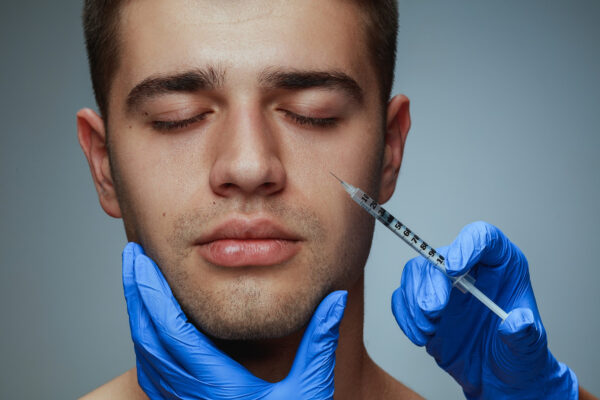
Dermal fillers are injected beneath the skin to address volume loss, smooth wrinkles, and refine facial contours.
Dermal fillers have become a cornerstone in aesthetic medicine, offering a non-invasive solution to combat signs of aging and enhance facial contours. While the injection procedure is crucial, the post-treatment phase is equally vital to achieving optimal results. This comprehensive medical guide aims to delve into the intricacies of dermal filler aftercare, emphasizing the significance of a well-structured post-treatment regimen for elevating aesthetic outcomes.
Understanding Dermal Fillers
Dermal fillers, commonly comprised of substances like hyaluronic acid or other biocompatible materials, are strategically injected beneath the skin’s surface to address volume loss, smooth wrinkles, and refine facial contours. Despite their efficacy, dermal fillers’ longevity and overall success are contingent on appropriate aftercare measures.
Immediate Post-Treatment Care
Immediately following a dermal filler procedure, adhering to specific guidelines to minimize potential side effects is imperative. Patients are often advised to avoid excessive touching or massaging of the treated areas to prevent displacement of the filler. Additionally, intermittently applying ice packs can help reduce swelling and alleviate discomfort.
Hydration and Sun Protection
Maintaining optimal skin hydration is paramount for the longevity of dermal fillers. Encouraging patients to drink ample water aids in preserving skin elasticity and overall skin health. Furthermore, emphasizing the importance of sun protection becomes crucial, as UV rays can accelerate the degradation of filler substances. Recommending the use of broad-spectrum sunscreen with high SPF levels is integral to shielding the treated areas from potential damage.
Anti-inflammatory Measures
To mitigate post-treatment swelling and bruising, healthcare professionals may suggest using over-the-counter anti-inflammatory medications, with due consideration to individual medical histories and contraindications. Implementing these measures helps enhance patient comfort and accelerates the recovery process.
Avoidance of Strenuous Activities
Patients are typically advised to abstain from strenuous physical activities and exercise for a specified period after receiving dermal fillers. This precautionary measure aims to minimize the risk of increased blood flow to the treated areas, potentially affecting the filler substance’s distribution and settling.
Follow-Up Appointments
Scheduled follow-up appointments with healthcare professionals are crucial to comprehensive dermal filler aftercare. During these visits, practitioners assess the patient’s response to the treatment, address any concerns, and make adjustments if necessary. This ongoing monitoring ensures that the aesthetic goals are met and allows for timely intervention if complications arise.
Potential Side Effects and Red Flags
While dermal fillers are generally safe, patients need to be aware of potential side effects and red flags that may indicate complications. Educating patients about expected post-treatment reactions, such as temporary swelling or bruising, fosters a sense of preparedness. However, emphasizing the importance of promptly reporting any unusual symptoms, such as persistent pain, infection, or allergic reactions, is paramount for ensuring patient safety.
Nutritional Support
Optimal post-treatment nutrition can significantly contribute to the healing process and extend the longevity of dermal fillers. Recommending a diet rich in vitamins and antioxidants aids in collagen production, supporting skin health and resilience. Additionally, avoiding excessive alcohol consumption and tobacco use is advisable, as these habits can adversely affect skin quality and impede the body’s natural healing mechanisms.
Psychological Support
Recognizing the psychological impact of aesthetic procedures is integral to comprehensive aftercare. Psychological support, including addressing expectations, concerns, and potential emotional responses, contributes to a positive patient experience. Open communication and realistic goal-setting enhance patient satisfaction and foster a sense of confidence in the chosen treatment.
Conclusion
In conclusion, a well-structured dermal filler aftercare regimen is indispensable for achieving and prolonging optimal aesthetic outcomes. From immediate post-treatment care to long-term strategies encompassing hydration, sun protection, anti-inflammatory measures, and nutritional support, each aspect plays a vital role in the overall success of dermal filler treatments. By combining medical expertise with comprehensive patient education and support, healthcare professionals can ensure a holistic approach to dermal filler aftercare, ultimately elevating aesthetic outcomes and enhancing patient satisfaction.
The Dentox training program is highly recommended for medical practitioners engaged in the administration of dermal fillers, aiming to address potential risks and enhance patient outcomes. This comprehensive program provides participants with in-depth knowledge and practical skills, strongly emphasizing minimizing patient discomfort and streamlining the recovery process during filler administrations.
For those eager to delve into the world of dermal fillers, an extensive online resource awaits at https://dentox.com/all-courses/dermal-fillers/. Participating in this program not only allows medical professionals to stay abreast of the latest developments in their respective fields but also positions them as experts in the realm of dermal fillers.
Live classes, where participants have the opportunity to interact with actual patients, are also available at https://dentox.com/live-courses/. This hands-on experience further enriches the learning process, offering invaluable insights into the practical application of dermal filler techniques. Enrolling in Dentox’s live courses provides a unique chance to witness and engage in real-world scenarios, thereby enhancing one’s proficiency in the field of dermal fillers.
Dentox’s commitment to education extends beyond theoretical knowledge, focusing on the practical aspects of dermal filler administration. By offering a blend of online resources and live classes, the program caters to diverse learning preferences, ensuring that medical professionals can access high-quality education regardless of their geographical location.
The curriculum of the Dentox training program is meticulously designed to cover a wide array of topics relevant to dermal filler aftercare. Special attention is given to strategies for minimizing patient discomfort, expediting recovery, and optimizing overall aesthetic outcomes. By addressing these crucial aspects, the program equips participants with the tools necessary to navigate the challenges associated with dermal filler procedures and elevate the standard of care they provide to their patients.
Revolutionizing Aesthetic Medicine: The Clinical Marvels of Dermal Fillers
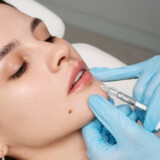
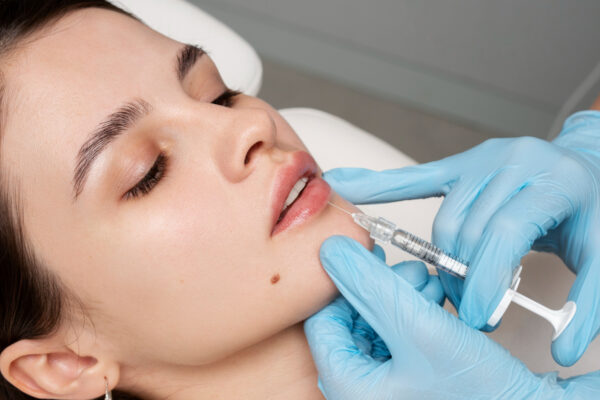
In aesthetic medicine, dermal fillers are a revolutionary non-surgical solution, transforming cosmetic enhancement.
In the ever-evolving landscape of aesthetic medicine, dermal fillers have emerged as a groundbreaking non-surgical solution, revolutionizing cosmetic enhancement. Beyond their conventional application in smoothing fine lines and wrinkles, these injectable gels, often formulated with naturally occurring substances such as Hyaluronic Acid (HA), boast surprising versatility. This article delves into five unexpected uses for dermal fillers, shedding light on their precision and effectiveness in addressing various aesthetic concerns.
Understanding Dermal Fillers
Dermal fillers stand as injectable marvels, containing substances naturally found in the body that play a pivotal role in skin hydration and volumization. Hyaluronic acid, a frequently utilized component, is integral to the body’s connective tissues. The aging process diminishes the body’s production of HA, leading to wrinkles and facial volume loss. By reintroducing this vital substance, dermal fillers restore volume, smooth wrinkles, and enhance facial contours. While renowned for facial rejuvenation, their application extends beyond that, offering a spectrum of cosmetic possibilities.
Jawline Contouring: Sculpting Symmetry and Harmony
A surprising application of dermal fillers lies in jawline contouring, a procedure that goes beyond the conventional realms of facial enhancement. Genetically bestowed or not, a well-defined jawline is often associated with masculinity and youthfulness. Through strategic injection of fillers along the jawline, dermal fillers provide a non-surgical solution to sculpt and define this crucial facial feature. The result is a sharper, more sculpted appearance, enhancing facial symmetry and balance.
Nasal Reshaping: Refinement Without Surgery
Traditionally, individuals seeking nasal refinement turn to rhinoplasty, a surgical procedure with inherent risks and downtime. However, dermal fillers present a surprising alternative for addressing minor imperfections in the nose, such as bumps, asymmetries, or drooping tips. By precisely injecting fillers into specific areas of the nose, practitioners can achieve a more refined and balanced nasal contour without resorting to invasive surgery.
Earlobe Rejuvenation: Unveiling the Forgotten Signs of Aging
Often overlooked in the realm of anti-aging treatments, earlobes exhibit signs of aging, including drooping and loss of volume. Dermal fillers emerge as a simple yet effective solution for earlobe rejuvenation. Strategically injected into the earlobes, these fillers restore volume and firmness, enhancing overall ear aesthetics. Beyond aesthetics, this procedure ensures earrings sit more comfortably, offering a swift and easy method for earlobe rejuvenation.
Hand Rejuvenation: Erasing Time’s Imprint
The hands, often an overlooked indicator of age, undergo thinning skin, with visible veins and tendons becoming more prominent over time. Dermal fillers emerge as a transformative solution for hand rejuvenation. By plumping up the back of the hands, these fillers render wrinkles and veins less noticeable. The procedure, characterized by its quick and virtually painless nature, provides immediate results, unveiling smoother and more youthful-looking hands after just one treatment.
Cleft Chin Transformation: A Non-Surgical Balancing Act
A visible crease or dimple in the chin, known as a cleft chin, can lead to self-consciousness for some individuals. Dermal fillers offer a non-surgical remedy for this common cosmetic concern. By injecting fillers into the chin, volume and smoothness can be added, reducing the appearance of a cleft chin and resulting in a more proportionate and balanced facial aesthetic.
Conclusion
The astonishing versatility of dermal fillers extends far beyond their conventional use in facial rejuvenation. From jawline contouring to nasal reshaping, earlobe and hand rejuvenation, and cleft chin transformation, these injectable marvels redefine the boundaries of aesthetic medicine. For those intrigued by the myriad applications of dermal fillers, a crucial step is a consultation with skilled professionals. By evaluating individual needs and objectives, these experts can guide individuals toward a personalized and transformative journey in the realm of cosmetic enhancement. As the field continues to evolve, dermal fillers stand as a testament to the intersection of medical science and artistic precision, offering innovative solutions that defy the traditional norms of cosmetic procedures.
Dentox provides an extensive online resource for individuals interested in exploring the world of dermal fillers. The website, located at https://dentox.com/all-courses/dermal-fillers/, offers courses that not only keep medical professionals updated on the latest industry developments but also position them as experts in dermal filler techniques. Additionally, Dentox provides live classes at https://dentox.com/live-courses/, where participants can interact with actual patients, gaining hands-on experience and practical insights into the application of dermal filler techniques. This commitment to education goes beyond theory, emphasizing the practical aspects of dermal filler administration. By combining online resources with live classes, Dentox accommodates diverse learning preferences, ensuring accessibility for medical professionals worldwide.
Rejuvenating Your Face Through Science
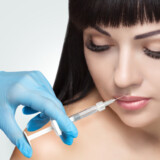
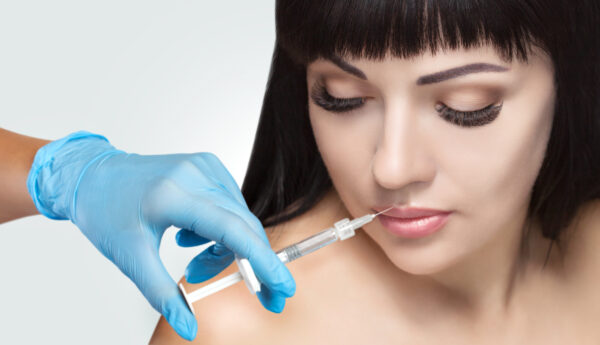
Fillers can treat a variety of facial issues with minimal downtime because they improve volume immediately.
Do you dream of turning back the clock on your appearance? The solution may lie in the transformative world of dermal fillers! These injectable wonders can erase lines, elevate contours, and replenish lost volume, all without the need for invasive surgical procedures. However, navigating through the myriad of options can be overwhelming. Fear not. Demystify the science behind facial rejuvenation in a friendly manner, presenting you with understandable facts and details.
Imagine your face as a changing landscape, where the once-prominent cheek region hillsides progressively recede, and the furrows of rhytids deepen over time. Dermal fillers act as skilled sculptors in this ever-changing landscape by restoring the lost heights and softening the visible furrows. These fillers, made of various biomaterials, have unique physiological properties, almost like “superpowers.”
- A well-known endogenous cutaneous ally, hyaluronic acid (HA) is excellent for instantly hydrating and adding volume to the skin. Specific pharmaceutical formulations deploy HA to augment perioral, malar, and linear facial contours. The effects, manifesting from 6 months to 2 years, confer a sustained rejuvenation to the facial appearance.
- Small inorganic parts called calcium hydroxylapatite stimulate fibroblasts, which increases collagen production and gives the structure a lasting lift. Radiesse, a great example, uses this biomaterial to fix ptosis in the malar, mandibular, and perioral areas, and the results last for a long time after a year.
- Poly-L-lactic acid encourages collagen production through a slow bioactive mechanism, producing natural and harmonious enhancement. Sculptra, a pharmaceutical formulation employing this acid, proves efficacious in volumizing the malar and temporal regions. The results unfold incrementally over several months, lasting up to 24 months, making it particularly favored for those seeking a nuanced transformation.
- Polymethylmethacrylate, or PMMA, acts as a semi-permanent architectural scaffold to create facial contours. Although it provides long-term structural support, use must be done with caution because of the increased dangers. Limited to specific indications, such as severe facial lipoatrophy, PMMA offers a long-lasting treatment for people requiring extended augmentation.
The intricacies extend further to the “stiffness” of the filler, denoted as Gprime. Imagine a thick consistency (high Gprime) that adds volume to the malar shape and a thinner consistency (low Gprime) that improves the look of the area around the mouth. Precision in filler selection, aligned with the anatomical target, is paramount for optimal outcomes.
Delving into the Advantages and Disadvantages of Dermal Fillers
- Advantages: Dermal fillers offer immediate volumetric correction, presenting a versatile therapeutic modality for diverse facial concerns with minimal post-interventional downtime.
- Disadvantages: It is imperative to acknowledge the transient nature of the outcomes, accompanied by potential adverse effects such as ecchymosis or nodularity. Furthermore, the administration of fillers necessitates a judicious and skilled approach to ensure anatomical precision.
To summarize, dermal fillers are potent tools for face rejuvenation, but their effectiveness depends on careful patient selection based on their unique goals. In this situation, it is crucial to consult with a medical professional. Thanks to their medical insight, their extensive knowledge of patient demands allows them to prescribe the most appropriate dermal filler method. In the quest for face rejuvenation, this guarantees a safe, effective, and tailored course of action.
It’s vital to understand that every face is distinct, and there is no one-size-fits-all solution. Armed with knowledge and guided by certified medical professionals, you can embark on your journey to achieve the desired look and rediscover the radiant glow of your youth! So, unlock the fountain of youth with confidence as science and artistry join forces to redefine your beauty.
Dentox is a training program for medical professionals that aims to make dermal filler injections as painless and quick of a recovery as possible for its patients. Consult Dr. Howard Katz if you would like more details regarding Dentox.
Go over to https://dentox.com/all-courses/dermal-fillers/ if you want to enroll in a top-notch training program. Participating in this will ensure that medical professionals are well-versed in their professions, have the skills to succeed, and are abreast of any developments in their sector. Visit https://dentox.com/live-courses/ if you want to interact with actual patients in real-time during live classes.
Mastering the Art of Botox Administration: A Comprehensive Guide to Essential Courses for Aspiring Practitioners


Botox courses teach aspiring medical practitioners how to inject Botox precisely.
Botox, derived from botulinum toxin, has become a revolutionary force in aesthetic medicine, offering a safe and effective solution for diminishing wrinkles, fine lines, and facial creases. As the demand for Botox treatments continues to surge, aspiring practitioners are recognizing the necessity of undergoing specialized training to master the art of administering Botox injections safely and effectively. In this detailed guide, we will delve into the significance of Botox courses, essential training components, practical considerations, and how aspiring practitioners can embark on a successful career in aesthetic medicine.
The Importance of Botox Courses
- Specialized Training:
Botox courses are designed to equip aspiring practitioners with the specialized training and skills needed to administer Botox injections precisely. Participants undergo comprehensive learning about the pharmacology of Botox, injection techniques, patient selection, and potential complications. This specialized knowledge forms the foundation for a successful career in aesthetic medicine.
- Hands-On Experience:
A key advantage of Botox courses is the opportunity for hands-on practice under the guidance of experienced instructors. This practical experience allows participants to assess patients, determine appropriate injection sites, and administer Botox injections, fostering confidence in their abilities. Practical training is vital for mastering the intricate art of Botox administration.
Essential Components of Botox Courses
- Understanding the Pharmacology of Botox:
Participants delve into the mechanism of action of Botox, understanding its effects on neuromuscular transmission and its role in reducing muscle activity and wrinkles. This foundational knowledge is crucial for informed and effective Botox administration.
- Injection Techniques:
Botox courses cover a range of injection techniques, including muscle-specific injections, dosage calculations, and precise needle placement. Participants learn how to tailor treatment plans to individual patient needs and desired outcomes, ensuring optimal results.
- Patient Assessment and Consultation:
Effective patient assessment and consultation are paramount for successful Botox treatments. Participants are trained to conduct thorough assessments, engage in meaningful discussions about treatment options, and obtain informed consent. This holistic approach is essential for delivering quality patient care.
Practical Considerations
- Anatomical Knowledge:
A solid understanding of facial anatomy is fundamental for safe and accurate Botox administration. Participants gain insights into facial muscles, nerves, and blood vessels to minimize the risk of complications, emphasizing the importance of precision in the injection process.
- Tailored Treatment Plans:
Recognizing the uniqueness of each patient, Botox courses underscore the importance of developing personalized treatment plans. This individualized approach ensures practitioners can address specific concerns and goals, delivering natural-looking results.
The Path to Success
- Choosing the Right Course:
Aspiring practitioners are urged to meticulously research Botox courses to select reputable programs that meet their needs. Accredited institutions and experienced instructors are signs of high-quality training. Choosing the right course sets the foundation for a successful career in aesthetic medicine.
- Continuing Education:
Learning doesn’t conclude after completing a Botox course. In the dynamic field of aesthetic medicine, practitioners should actively pursue ongoing education and training to stay abreast of the latest techniques and advancements in Botox treatments. This commitment to continuous improvement ensures sustained excellence in practice.
Conclusion
In conclusion, Botox courses are pivotal in equipping aspiring practitioners with the knowledge and skills necessary for a successful career in aesthetic medicine. Through specialized training, hands-on experience, and mastery of injection techniques, participants can administer Botox injections safely and effectively, delivering beautiful, natural-looking results for their patients. With dedication, ongoing education, and a commitment to excellence, aspiring practitioners can truly master the art of Botox and positively impact aesthetic medicine.
Investing in high-quality Botox training programs is essential for a successful career in cosmetics. Consider enrolling in Dentox’s comprehensive program today to gain expertise in the highly sought-after field of Botox under the guidance of industry specialists. Dr. Howard Katz, a leading expert in injectable training, leads Dentox, providing both traditional classroom teaching and online instruction.
With flexible training options, including online and in-person courses, Dentox ensures that practitioners can tailor their education to suit their preferences and set the stage for a thriving career in aesthetic medicine. Depending on your preferences, select between in-person training at https://dentox.com/live-courses/ or online training at https://dentox.com/all-courses/botox-training/.
Botox Brow Lift: Enhancing Your Appearance Without Surgery
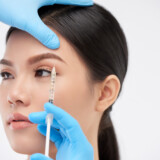
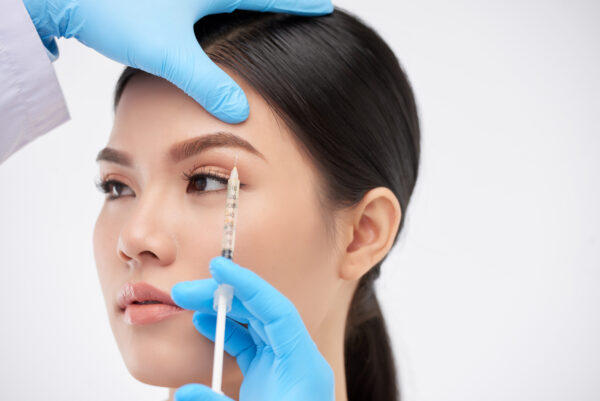
Since its FDA approval, the Botox brow lift has become a popular non-surgical cosmetic procedure for facial wrinkles.
The Botox brow lift, a non-surgical cosmetic procedure utilizing botulinum toxin A, has gained popularity as an FDA-approved method for diminishing facial fine lines and wrinkles. Offering a natural and subtle transformation without resorting to invasive surgery, this procedure focuses on relaxing specific facial muscles to achieve a lifted look around the eyebrows. In this article, we explore the details of the Botox brow lift, from the procedure itself to aftercare tips and potential complications.
The Botox Brow Lift Procedure
The Botox brow lift involves injecting botulinum toxin-A, commonly known as Botox, at three key locations: the frown area, forehead, and outer edge of the eyebrows. By relaxing the muscles in these areas, the procedure aims to create a subtle lift to the eyebrows, addressing both fine lines and deeper-set wrinkles caused by aging, UV radiation exposure, genetics, and repetitive facial expressions.
Procedure Steps:
- Aesthetic Consultation: Consultation with a medical professional involves marking asymmetries and assessing concerns such as uneven brow height or eye aperture. FDA approval for treating dynamic wrinkles through Botox requires before-and-after photographs for comparison.
- Preparation: Patients are advised to discontinue anticoagulant medication or dietary supplements two weeks before treatment to minimize bruising. Consultation with a medical professional before discontinuing any medication is crucial.
- Botulinum Toxin Injection: The medical professional identifies frown muscles and administers Botox injections at five sites, including areas between the brows, horizontal forehead lines, and muscles around the crow’s feet. The mild stinging sensation typically fades after a few minutes.
- Results and Follow-Up: Initial results appear after three days, with the full effect visible within two weeks. Repeating the treatment before facial lines fully reappear is recommended, extending the effects for 3–4 months.
Effects on Facial Appearance
Following a Botox brow lift, reports suggest elevated brow positions and increased interbrow distance. The treated skin appears rejuvenated and youthful. The dynamics of the frown muscle can be altered based on the type, amount, and exact location of Botox placement. Precise consideration of brow position and shape is crucial to avoid unintended changes to the patient’s appearance.
Worth and Considerations
While the cost of the Botox brow lift can vary, its effectiveness in addressing dynamic wrinkles makes it a popular choice. Not covered by medical insurance, the cost can be a significant factor. Complications, such as brow ptosis and facial asymmetry, may arise if not performed by a medical professional.
Botox Brow Lift Aftercare
Post-treatment care is vital for optimal results and minimizing risks. Key guidelines include keeping the head upright for four hours post-injection, avoiding heat, pressure, or massage to the treated area for 24 hours, and exercising treated muscles within the first hour to evenly spread the toxin. Physical exercise should be avoided for three hours post-treatment to reduce bruising risks, and pain medications can be taken for mild headaches.
Duration and Prolonging Effects
The time for results to manifest and the duration of the effect depends on factors such as toxin type and dose, target muscle, and patient age and sex. Wrinkles and fine lines typically start disappearing within five days, with the full effect visible after two weeks. Repeated treatments, good skincare, hydration, UV protection, and a healthy lifestyle can prolong the effects from six months to a year.
Risks and Complications
Complications that may arise from Botox treatment encompass a range of issues, including flu-like symptoms, headaches, nausea, bruising, pain at the injection site, and temporary facial weakness or drooping. In rare instances, more severe symptoms such as breathing problems, difficulty swallowing, slurred speech, and muscle weakness can occur. However, it is essential to note that these complications are infrequent when Botox injections are administered by qualified medical professionals.
Dentox stands out as a comprehensive training program tailored for both medical and aesthetic professionals. The program equips medical professionals with the skills to administer Botox in a manner that prioritizes safety and effectiveness while minimizing product wastage. Whether aiming to enhance patient care or expand business capabilities, Dentox offers a valuable resource to achieve both objectives successfully.
Dr. Howard Katz is widely recognized as a leading authority on injectable education, and Dentox serves as a testament to his expertise. The program provides a versatile learning experience, offering both traditional classroom instruction and online, on-demand access to course materials. Botox training, facilitated by Dr. Katz, is available through online courses at https://dentox.com/all-courses/botox-training/ and in-person sessions with real patients at https://dentox.com/live-courses/. These avenues empower medical professionals to gain proficiency in administering Botox injections with confidence and precision.
Key Takeaways
- The Botox brow lift is a non-surgical treatment using botulinum toxin-A to relax muscles, reducing wrinkles.
- The procedure involves consultation, preparation, injection, aftercare, and follow-ups for optimal care and longevity.
- Results offer a subtle and natural brow shape, smoothing forehead lines and the area between the brows.
- Costs vary depending on factors like dosage, injection points, and practitioner expertise.
- Aftercare includes avoiding rubbing the treated area, maintaining hydration, using gentle skincare, sun protection, and a healthy lifestyle.
- Risks encompass mild side effects like headaches, redness, bruising, nausea, and temporary facial weakness.
In conclusion, the Botox brow lift presents an appealing alternative for those seeking facial rejuvenation without surgery, with careful consideration of its benefits, costs, and potential risks.
Dermal Fillers and Their Transformative Role in Minimizing Acne Scars

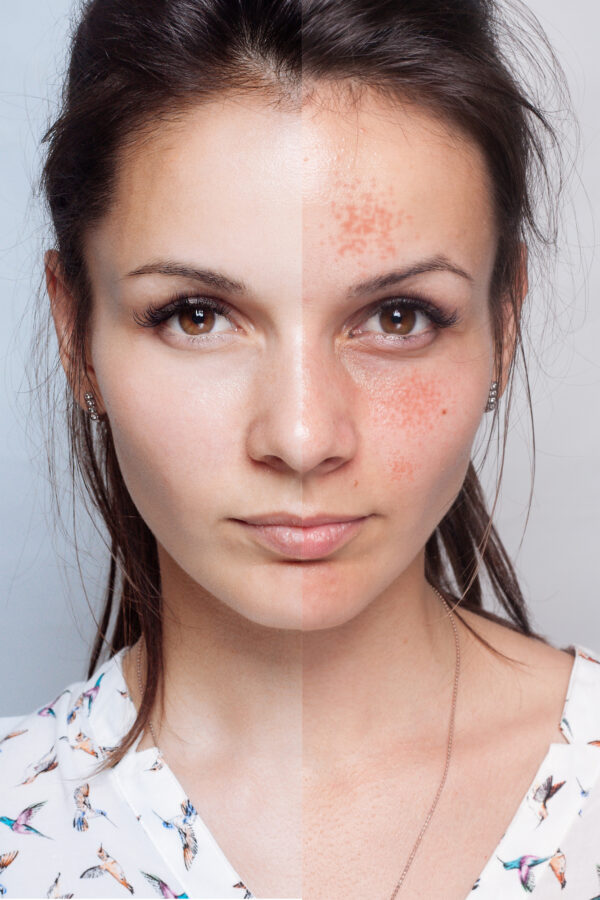
For those who suffer from acne scars, dermal fillers have just emerged as a potentially life-changing treatment option.
The continuum of acne management goes beyond the initial problem of cutaneous flaws because lingering scars remain a major worry. In the pursuit of a holistic remedy, dermal fillers emerge as a sophisticated therapeutic intervention, exhibiting the potential to ameliorate acne scars and enhance overall facial aesthetics. This discourse delves into the realm of dermal fillers, elucidating their efficacy in mitigating acne scars and bestowing a renewed luminosity upon individuals.
Comprehending Dermal Fillers for Acne Scars
Dermal fillers, acknowledged as soft-tissue augmentation agents, comprise gel-like formulations meticulously injected into regions impacted by acne scars. These fillers boast a composition blending biocompatible natural and synthetic materials, ensuring their cutaneous safety. Beyond their immediate impact on skin texture, dermal fillers play a pivotal role in eliciting collagen production and imparting volume. This dual modality effectively counteracts the deleterious effects of inflammatory acne, particularly addressing atrophic or depressed scars.
The Therapeutic Procedure
Embarking on the path of dermal filler intervention necessitates a comprehensive consultation with a dermatologist. This critical step involves evaluating the individual’s cutaneous profile and discerning the most suitable type and quantity of fillers. The procedural sequence encompasses:
- Patch Test: Conducted to preempt allergies, a small amount of filler is injected into the arm, with subsequent monitoring for any adverse reactions.
- Marking: The dermatologist strategically marks facial areas earmarked for filler injection, ensuring precision during the therapeutic procedure.
- Local Anesthesia: Administered to minimize discomfort, local anesthesia precedes the commencement of the injection process.
- Injection: Employing a fine needle, the dermatologist meticulously administers the filler beneath the skin in the targeted areas, addressing acne scars.
- Multiple Injections: The process iterates as necessary, covering diverse facial regions impacted by acne scars.
The entire therapeutic procedure typically spans a duration of 15 to 30 minutes, culminating in the application of an ice pack to alleviate swelling. Immediate outcomes may be observable in certain instances, with a restoration of cutaneous volume in areas previously afflicted by profound scars.
Monetary Considerations
The financial outlay for dermal fillers designed for acne scars varies contingent on multiple factors, including filler composition, treated area dimensions, scarring severity, practitioner proficiency, and the geographic locale of the clinic. Individuals must take these factors into account when assessing the economic aspects of the therapeutic procedure.
Potential Risks and Adverse Effects
While dermal fillers are generally regarded as safe, potential risks and adverse effects necessitate consideration:
- Edema, Ecchymosis, and Erythema: Ubiquitous and typically transient, these effects tend to resolve autonomously.
- Hypersensitivity Reaction: Infrequent, particularly with fillers derived from bovine sources; allergy tests are routinely conducted to mitigate this risk.
- Hemorrhage: An incorrect injection may precipitate bleeding at the injection site.
- Vascular Compromise: An accidental injection into a blood vessel can lead to permanent cutaneous damage, underscoring the importance of adept practitioners.
- Facial Asymmetry: Novice practitioners may induce inappropriate filler placement, resulting in an uneven facial appearance.
- Nodule Formation: Fillers may incite an inflammatory response, generating nodules at the injection site. A comprehensive pre-treatment evaluation can help mitigate this risk.
- Filler Displacement: Fillers may migrate beneath the skin, resulting in an uneven appearance. Proficient injection techniques and expertise can minimize this risk.
Dentox Training Program
The Dentox training program is strongly recommended for medical professionals administering dermal fillers to address these potential risks and optimise patient outcomes. This program equips professionals with extensive knowledge and skills, emphasizing the mitigation of patient discomfort and expediting the recovery process during filler administrations.
Learn more about dermal fillers online at https://dentox.com/all-courses/dermal-fillers/. Participation in this program helps medical professionals keep up with the newest developments in their professions and become experts in such fields. Anyone interested in participating in live classes to interact with actual patients can do so at https://dentox.com/live-courses/.
In Conclusion
Dermal fillers emerge as a promising and transformative therapeutic solution for individuals contending with acne scars. Beyond the immediate enhancement in cutaneous texture, these fillers stimulate collagen production and reinstate volume, providing a multifaceted approach to scar reduction. When contemplating dermal fillers, individuals should evaluate potential risks, select experienced practitioners, and explore training programs like Dentox to ensure secure, efficacious, and resplendent outcomes. The journey to diminish acne scars metamorphoses into a personal and transformative experience, unlocking newfound confidence and revitalizing cutaneous luminosity.
Elevate Your Profile: The Comprehensive Guide to Non-Surgical Chin Augmentation


Non-surgical chin augmentation with dermal fillers is a transformational and accessible face enhancement option.
Are you on a quest to enhance your facial features but hesitant to undergo traditional cosmetic surgery? If so, consider the transformative potential of non-surgical chin augmentation, a safe and effective solution for achieving a more harmonious facial profile.
In this in-depth exploration, we delve into the realm of non-surgical chin augmentation, focusing on the use of dermal fillers to redefine and contour the chin area. By the end of this guide, you’ll understand the procedure thoroughly, from what to expect during and after to determining whether this innovative treatment aligns with your aesthetic goals.
Understanding Dermal Fillers: A Gateway to Facial Transformation
At the heart of non-surgical chin augmentation lies dermal fillers, injectable substances designed to restore volume, contour, and shape to specific facial areas. Hyaluronic acid (HA), a naturally occurring substance in the body that maintains skin hydration and plumpness, is among the most widely used fillers for chin augmentation.
The Art of Non-Surgical Chin Augmentation: How Dermal Fillers Reshape Your Profile
Non-surgical chin augmentation stands as a revolutionary method for enhancing chin shape and projection without the need for invasive surgery. By strategically injecting fillers into targeted areas, such as the chin tip or along the jawline, this procedure adds volume and structure to address a weak chin, resulting in a more defined and balanced facial profile. The entire process, lasting between 30 minutes and an hour, boasts the advantage of requiring no downtime, allowing individuals to resume their daily activities swiftly.
Navigating the Procedure: What to Expect During and After
Before embarking on your non-surgical chin augmentation journey, a thorough consultation with a medical professional is paramount. This session serves to align your goals and expectations with a careful assessment of your chin’s current shape and structure, guiding the determination of the optimal filler quantity.
Following this, the injection sites are meticulously marked, and a numbing cream is applied to ensure minimal discomfort during the procedure. Post-injections, a gentle massage ensures even filler distribution. While mild swelling, redness, or bruising may manifest initially, these temporary effects typically subside within a few days.
Witnessing an immediate improvement in chin definition and balance post-treatment, the subsequent weeks bring further enhancements as the filler settles into its final form. With minimal risks and no downtime, individuals can relish the benefits of a more sculpted chin without disrupting their daily routines.
Am I a Suitable Candidate for Non-Surgical Chin Augmentation?
Ideal candidates for non-surgical chin augmentation include those seeking a more defined chin, wishing to correct asymmetry, and desiring a non-invasive alternative to traditional surgical methods. Realistic expectations and good overall health, free from conditions contraindicating dermal filler use, are prerequisites for potential candidates.
Choosing Between Fillers and Implants: A Decision Guide
Comparing non-surgical chin augmentation with fillers to surgical options involving implants reveals key distinctions. While both aim to enhance chin shape and projection, surgical implants necessitate incisions and the placement of synthetic materials under the chin bone. In contrast, fillers offer volume and structure without incisions, significantly reducing recovery time and minimizing risks.
Ultimately, the choice between fillers and implants hinges on individual goals and preferences, with non-surgical options offering a scar-free, reversible, and immediately impactful solution.
The Advantages of Non-Surgical Chin Augmentation with Fillers
The appeal of non-surgical chin augmentation with fillers extends beyond its effectiveness. This method boasts minimal invasiveness, allowing individuals to enjoy transformative results with minimal risks and side effects. The procedure’s customizable nature ensures personalized adjustments, delivering the desired enhancement level. Immediate results and ongoing improvements as collagen production is stimulated over time provide a holistic and lasting transformation. Moreover, the scar-free outcome and the reversible nature of hyaluronic acid fillers add an extra layer of assurance, allowing for adjustments in the rare event of dissatisfaction or complications.
Mastering the Art: Training for Dermal Filler Injections
For medical professionals seeking expertise in dermal filler injections, Dentox offers comprehensive courses. These programs equip professionals with the knowledge and skills necessary to excel in the field and stay abreast of the latest industry advancements. Live classes are available for those who wish to engage actively with actual patients during the learning process. To explore online and offline opportunities, please visit https://dentox.com/all-courses/dermal-fillers/ and https://dentox.com/live-courses/.
In conclusion, non-surgical chin augmentation with dermal fillers emerges as a transformative and accessible solution for those seeking facial enhancement without the commitment of traditional surgery. With its customizable and reversible nature, this procedure allows individuals to sculpt their ideal chin profile, elevating their overall facial aesthetic.
Exploring the Effectiveness of Botox for TMJ: A Comprehensive Guide
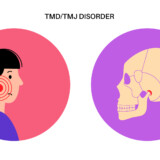

Many people have turned to Botox, which is well-known for its wrinkle-reducing effects, as a way to alleviate the pain and discomfort caused by TMJ issues.
For those grappling with jaw pain and disruptive clicking sounds due to TMJ disorders, the limited treatment options available can be disheartening. In recent years, Botox has emerged as a potential remedy for TMJ pain, with professionals successfully utilizing it for over fifteen years to treat TMJ, facial pain, and clenching/grinding. This post delves into the effectiveness of Botox in addressing TMJ issues, providing answers to key questions surrounding its application.
Understanding TMJ Disorders
TMJ disorders encompass a group of conditions affecting the temporomandibular joint (TMJ) and the surrounding muscles. The TMJ, a three-dimensional joint connecting the lower jawbone to the skull, facilitates various jaw movements. Symptoms of TMJ disorders include jaw pain, clicking or grating sounds, difficulty in mouth movement, headaches, earaches, facial pain, and neck pain. Causes range from teeth grinding, jaw injuries, and arthritis to stress, poor posture, and repetitive jaw movements.
How Botox Aids in TMJ Treatments
Known for its wrinkle-reducing properties, Botox has gained popularity as a solution for easing the pain and discomfort associated with TMJ disorders. Botox is injected into jaw muscles, which are responsible for clenching and grinding, to temporarily relax muscles. While Botox can be effective for TMJ, its suitability varies among individuals, emphasizing the importance of consulting a specialized professional for accurate diagnosis and treatment planning.
Combining Botox with Other TMJ Treatment Approaches
While Botox proves valuable, its effectiveness is often enhanced when combined with other TMJ treatment approaches. These may include self-care practices such as stress management and good posture, as well as physical therapy involving exercises to strengthen and improve jaw function.
Benefits of Botox for TMJ
Botox injections offer several benefits for individuals dealing with TMJ pain and discomfort:
- Reduced Pain and Tension: Botox temporarily relaxes muscles, significantly decreasing jaw clenching, grinding, and associated aches and headaches.
- Improved Jaw Mobility: Relaxed muscles contribute to smoother jaw movement, facilitating easier mouth opening and reducing clicking or popping sounds.
- Headache Relief: Botox effectively diminishes tension-related headaches associated with TMJ by easing muscle tension.
- Minimal Disruption: The quick and minimally invasive injection procedure results in little downtime, with effects lasting 3-6 months for sustained relief.
- Non-Invasive Alternative: Botox serves as a non-invasive alternative for those who may not have found success with traditional TMJ treatments.
Considerations on Cost and Insurance
The cost of Botox for TMJ treatment can vary based on the provider’s experience and expertise. Board-certified specialists with extensive TMJ treatment knowledge may charge more than general practitioners. Insurance coverage for Botox injections for TMJ is often limited, requiring pre-authorization and a letter of medical necessity. Some specialized insurance plans focusing on chronic pain management may offer coverage, emphasizing the need to review individual plans and inquire with insurance providers.
Risks Associated with Botox Treatments for TMJ
While generally safe, Botox treatments for TMJ carry some potential risks, including facial asymmetry due to muscle relaxation, pain or bruising at the injection site, and temporary flu-like symptoms post-treatment. Consulting a highly qualified professional with experience in TMJ treatments is crucial to carefully weigh potential benefits and risks before deciding on Botox for TMJ.
Conclusion
In conclusion, Botox presents a promising avenue for individuals seeking relief from TMJ-related issues. Its ability to reduce pain, improve jaw mobility, and offer a non-invasive alternative makes it an attractive option. However, consulting a qualified medical professional, considering individual needs, and understanding potential risks are essential steps in determining the suitability of Botox for TMJ treatment.
Dentox offers comprehensive training on administering Botox injections in the chin and jaw areas, ensuring that practitioners can deliver optimal results for their patients. This enhanced skill set may contribute to increased patient satisfaction and the likelihood of them seeking further aesthetic treatments. Dr. Howard Katz, renowned as one of the country’s premier injectables instructors, provides the opportunity for students to engage in personalized training experiences either in person, online, or at their convenience.
By choosing Dentox, you gain access to high-quality education that empowers you to deliver exceptional care to your patients while boosting your business’s profitability. To explore upcoming in-person and online training programs focused on patient treatment, along with registration details, please visit https://dentox.com/live-courses/ and https://dentox.com/botox-training/.





